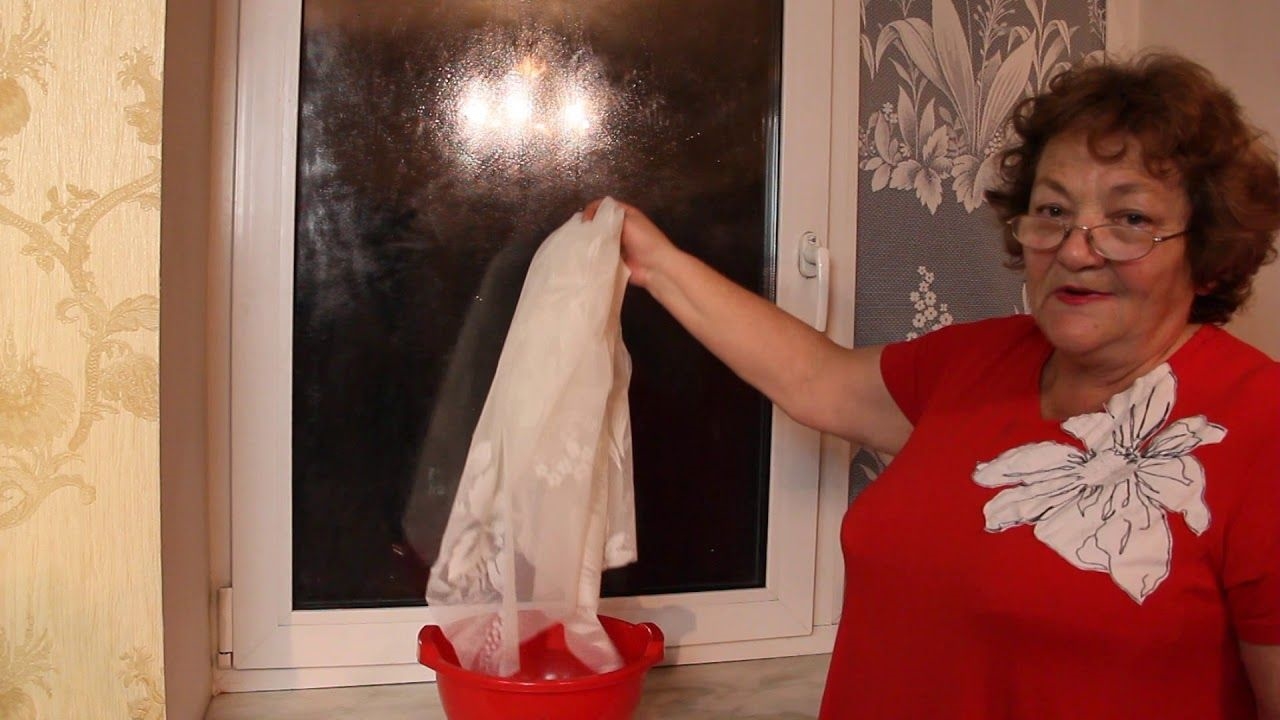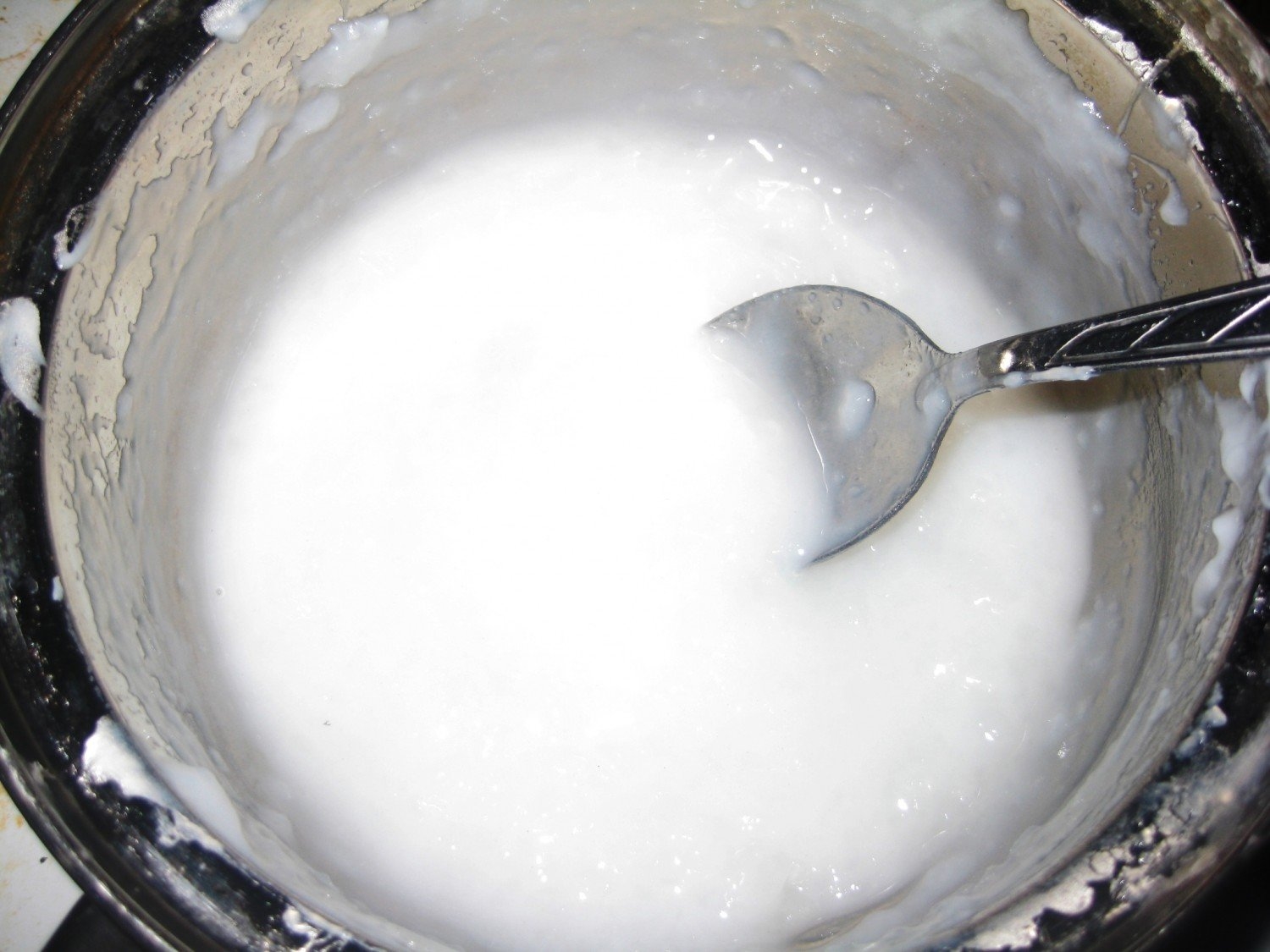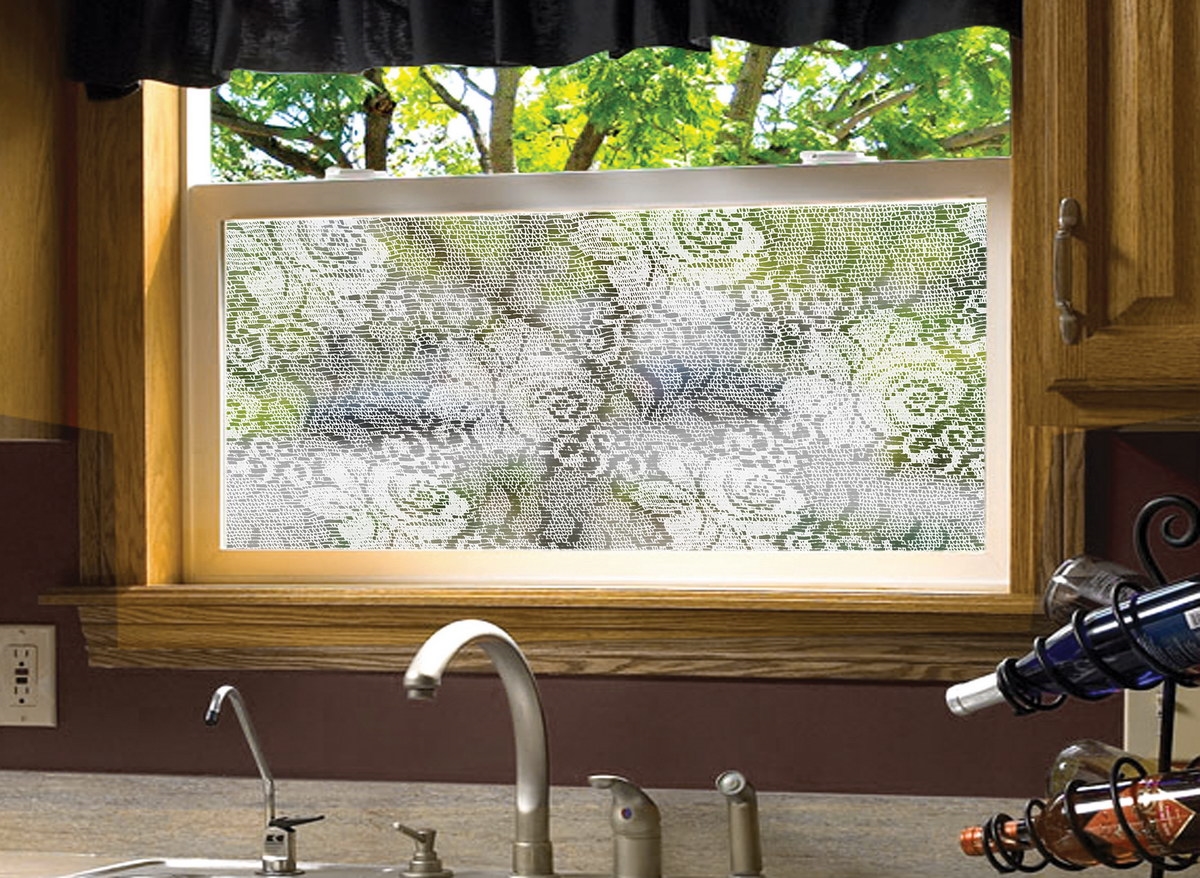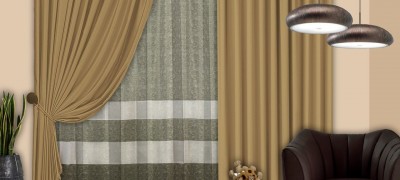How to glue tulle to glass using starch
The novelty of the interior is considered to be the windows in lace. This is an original and beautiful way to decorate your home. Also, tulle hides residents from the outside world and creates a sacrament for those present inside. How to glue the tulle on the window yourself.

How to glue tulle to glass with starch
Windows play a big role in a complete design. But tulle plays a more decorative role. Curtains create a harmonious and cozy picture. The owner of a large house can afford to purchase large curtains and luxurious French curtains. Small homeowners need a more modest option.

Before starting work, make sure you have all the tools and glue available. Also choose fabric and glass:
- Lace tulle. Choose a lightweight fabric with inconspicuous patterns. Heavy material will come off quickly.
- Cobweb. Silk and synthetic threads create a durable material. It will appear on the window, as if a beautiful trail from frost.
- Laces like openwork and guipure. Please note that it is better not to take hand-made fabrics, because they are not as strong, expensive and unstable.
- Vintage. Old and unworn materials create stylish and contemporary designs.
Selection of tools and materials
Prepare according to this list:
- Well sharpened scissors.
- Measurement tape.
- The utensil in which you will prepare the gum.
- Wide tassel.
- Pencil, ruler and thick paper.

Of the materials you need only:
- Lace material or ready-made tulle.
- Corn or potato starch.

Making glue from starch
The tulle will adhere thanks to the synthetic adhesive. Now there are a lot of gluing tools. But unnatural liquid also has disadvantages:
- Due to ultraviolet light, the glue can turn yellow.
- There may be an unpleasant odor in the room in hot weather.
- If you want to re-glue the old tulle, then this will be problematic.

Therefore, people prefer natural glue that can be made inexpensively at home from natural corn or potato starch.

Corn
In order to prepare corn glue, you need:
- hot water - 350 milliliters.
- cold water - 2 tablespoons.
- cornstarch - 2 tablespoons
- scapula (preferably made of wood).
- a bowl for stirring.

Step-by-step instruction:
- Mix the starch with the cold liquid and stir the mixture well.The spatula will help break up the lumps so that the substance is homogeneous.
- Add hot water little by little.
- Stir until the consistency is the same.
- The glue can be used after it has cooled completely.

Potato
The process for making potato glue is slightly different from the previous one. Looking for:
- Warm water - 3 liters.
- Potato starch - 1 tablespoon.
- Mixing bowl.
- Scapula.

Cooking method:
- Take warm water. Important! Not hot, but slightly heated.
- Fill a bowl with water.
- Add the potato starch, stirring to avoid lumps.
Additional information: Wear gloves before the process to avoid getting the adhesive on your hands.
You can glue tulle on the window with potato starch, but it needs warm and good water. Boiling water cannot be used. The liquid should be thin and not too thin.

Pasting process
How to stick tulle on plastic windows:
- Remove grease and dirt from the window.
- Prepare the glue.
- Use a measuring tape to find out the height and width of the window opening.
- Write the resulting dimensions on paper. Draw a triangle with a ruler and pencil.
- Measure 0.5 centimeters near each edge of the triangle. This is required so that the material can shrink as the adhesive dries.
- Create a paper pattern.
- Attach it to the fabric.
- Line the pattern with soap.
- Cut out the pasting.

After that, you can safely create fabric blanks. Glue is allowed by two processes:
- Apply glue to the window, attach a cloth, smooth it and go over the top again with glue. Wait for it to dry and the decoration is ready.
- Dip the fabric into the glue. Make sure every millimeter gets into the liquid. Leave the material in the container for a couple of minutes to soak well. Unscrew the glue from the canvas a little. Spread out the fabric and glue to the window. It is important that no wrinkles remain. When the glue is dry, the decor is ready.
Advantages and disadvantages of this method
Window lace is a tulle that is attached with glue. This method opens up many advantages:
- The process is extremely easy, even children can decorate windows with lace.
- Few tools are required, you do not need to buy anything extra. Only scissors, measuring tape and ruler are used.
- Cheap. You don't need to buy an expensive curtain or lambrequin. You can use any lace. The main rule when choosing a canvas: unspoiled edges and patterns.
- Appearance. The interior becomes instantly luxurious and rich. And with the help of the sun, beautiful pictures will be born on the wall.
- Forget about cornice, frame or baguettes. You don't need them with a lace window.

Other ways to decorate
Today, window decoration in the interior takes an important place. Therefore, there are many ways to make a room more comfortable:
- Don't be afraid to experiment with curvy and voluminous shapes. Drapery is a great way to showcase luxury and chic.
- Bright and saturated shades are considered relevant. Especially during the colder seasons.
- Natural materials are actively fighting for a place in the house. Linen, silk and velvet fabrics create a festive atmosphere.
- Roller blinds are complemented by ornaments and patterns.
- Lambrequins make the room visually larger.
- The eyelets create uniform waves that suit both retro styles and modern designs.
How to remove patterned inserts
Over time, the decoration will not be as beautiful as it used to be. Therefore, you need to change the decor. Starch allows you to do this very simply. All you need is hot water and a sponge (or soft cloth). Wet them and wipe the tulle.
Leave the curtain on for a couple of minutes, after which you can gently begin to peel off the lace. If in some places the tulle does not want to lag behind, then walk again with warm water. By adhering to all the instructions, there will be no stains on the windows.

Tulle glued to the window is becoming more and more popular. This opportunity should not be missed. In winter, patterns will remind you of frosty lines, in summer - a beautiful landscape, in autumn - colorful leaves, and in spring - exuberant flowering. Every home can be decorated in such a simple and quick way.
Video: how to correctly crate tulle on the window

















